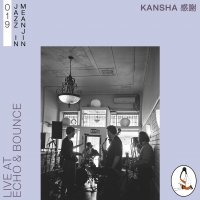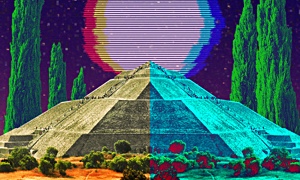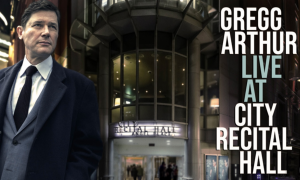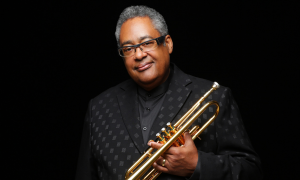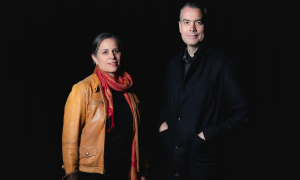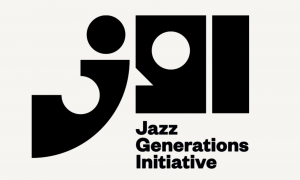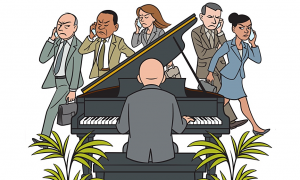Forty years ago on December 5, Albert Maysles' Gimme Shelter was released. The searing documentary about the last leg of the Rolling Stones 1969 tour culminated with the group's concert appearance at the Altamont Speedway near San Francisco. Today, in my Wall Street Journal article here, Albert, 83, talks with me about the film that accidentally captured the Love Generation's dark side, gave the Stones their bad-boy image and set new artistic standards for the rock-umentary. [Pictured from left: David and Albert Maysles in the 1970s]
Held roughly three months after Woodstock, Altamont had a very different tone than the earlier “3 Days of Peace & Music" at Bethel, N.Y. For one, it didn't rain at Altamont, so there was little to tamp down the animated crowd of 300,000. For another, psychedelic drug use was rampant, turning many concert-goers into hallucinating aggressors. What's more, state police weren't used to protect the stage. That task fell to private security—the Hell's Angels—who were brought in with promises of free beer.
By late afternoon on December 6, acid-tripping audience members nearest the stage began to press dangerously close to performing bands. Harleys parked imperiously in front of the stage by the Angels were knocked over. To beat back the crowds and punish stoned bike bashers, irate Angels began swinging pool cues, spurring one roughed up concert-goer to pull a gun. He was summarily stabbed to death.
Albert and his extensive camera crew at Altamont captured all of these harrowing events in Gimme Shelter as well as the Stones' emergence as “America's Greatest Rock Band." When the film was screened in 1970, critics charged Albert, his brother David and everyone else who worked on the film with gross indifference, insisting they were culpable for encouraging the violence. The critics' argument was that the thuggish Hell's Angels and crashing acid-droppers were playing to the cameras—a charge Albert refutes to this day.
I've always been taken by the stark terror and raw excitement of Gimme Shelter. So several weeks ago, I asked Albert [pictured] if he'd be willing to screen a print for just the two of us at his Harlem movie theater. After posing the idea, I fully expected a polite rejection. Instead, Albert was only too happy to oblige. “You're not tired of seeing it?" I asked, doubting my good fortune. “Not at all," he said. “I see something new each time I view the film."
So down we went into his dark theater. Watching Albert watch the film while the Stones on screen watch footage of the film on Steenbeck editing machines in 1970 was quite something. Talk about watching the watchers. Being able to chat with Albert during the film, scene by scene, allowed me to gain greater insight into how it was made and why Gimme Shelter is such an important work.
In many ways, the film is a bookend to What's Happening! The Beatles in the U.S.A. (1964), which also was filmed by Albert and his brother David five years earlier. The film captures the Fab Four's arrival at Kennedy Airport and trails them on their first Eastern Seaboard tour, including encounters with screaming and disbelieving fans. But between She Loves You and Sympathy for the Devil was the civil rights movement, Vietnam, political assassinations, harder drug use, race riots, the election of President Nixon and other national tensions.
Taken together, these films document the youth culture's innocence, its rapid maturation and eventual deterioration. Within five years, we see the culture's delirious slide into self-indulgence, sloth and narcissism. Without reaching a conclusion or making judgments, Gimme Shelter manages to provide a snapshot of rock-star worship, generational boredom, class warfare between working-class bikers and middle-class collegians, and a stark and frightening absence of adult supervision.
Albert also filmed Grey Gardens (1975), The Gates (2005), Muhammad and Larry (2009), Salesman (1969) and many other vital documentaries㬡 in all. His radical invention was to drop the solemn-voice narrator and talking-head interviews so prevalent in documentaries. Instead, Albert's stories would be told by the events themselves, with his camera remaining evident to its subjects but never intruding or angling with a point of view. This transparency on the part of the filmmaker was revolutionary at the time. Today, of course, Albert's verite style has become somewhat standard.
Albert was and remains the father of the modern documentary and rock and roll's greatest living filmmaker.
Tomorrow, outtakes from my interview with Albert that weren't included in my Wall Street Journal article.
JazzWax discs: Gimme Shelter was recently released as a Blu-Ray disc. You'll find it here. Or here as a DVD. Or at Netflix. What's Happening! The Beatles in the U.S.A. can be found on DVD here. Or at Netflix.
JazzWax clips: Here's a clip from Albert and David Maysles' What's Happening! The Beatles in the U.S.A....
Here's a clip from Gimme Shelter of the Rolling Stones performing at New York's Madison Square Garden in November 1969...
Held roughly three months after Woodstock, Altamont had a very different tone than the earlier “3 Days of Peace & Music" at Bethel, N.Y. For one, it didn't rain at Altamont, so there was little to tamp down the animated crowd of 300,000. For another, psychedelic drug use was rampant, turning many concert-goers into hallucinating aggressors. What's more, state police weren't used to protect the stage. That task fell to private security—the Hell's Angels—who were brought in with promises of free beer.
By late afternoon on December 6, acid-tripping audience members nearest the stage began to press dangerously close to performing bands. Harleys parked imperiously in front of the stage by the Angels were knocked over. To beat back the crowds and punish stoned bike bashers, irate Angels began swinging pool cues, spurring one roughed up concert-goer to pull a gun. He was summarily stabbed to death.
Albert and his extensive camera crew at Altamont captured all of these harrowing events in Gimme Shelter as well as the Stones' emergence as “America's Greatest Rock Band." When the film was screened in 1970, critics charged Albert, his brother David and everyone else who worked on the film with gross indifference, insisting they were culpable for encouraging the violence. The critics' argument was that the thuggish Hell's Angels and crashing acid-droppers were playing to the cameras—a charge Albert refutes to this day.
I've always been taken by the stark terror and raw excitement of Gimme Shelter. So several weeks ago, I asked Albert [pictured] if he'd be willing to screen a print for just the two of us at his Harlem movie theater. After posing the idea, I fully expected a polite rejection. Instead, Albert was only too happy to oblige. “You're not tired of seeing it?" I asked, doubting my good fortune. “Not at all," he said. “I see something new each time I view the film."
So down we went into his dark theater. Watching Albert watch the film while the Stones on screen watch footage of the film on Steenbeck editing machines in 1970 was quite something. Talk about watching the watchers. Being able to chat with Albert during the film, scene by scene, allowed me to gain greater insight into how it was made and why Gimme Shelter is such an important work.
In many ways, the film is a bookend to What's Happening! The Beatles in the U.S.A. (1964), which also was filmed by Albert and his brother David five years earlier. The film captures the Fab Four's arrival at Kennedy Airport and trails them on their first Eastern Seaboard tour, including encounters with screaming and disbelieving fans. But between She Loves You and Sympathy for the Devil was the civil rights movement, Vietnam, political assassinations, harder drug use, race riots, the election of President Nixon and other national tensions.
Taken together, these films document the youth culture's innocence, its rapid maturation and eventual deterioration. Within five years, we see the culture's delirious slide into self-indulgence, sloth and narcissism. Without reaching a conclusion or making judgments, Gimme Shelter manages to provide a snapshot of rock-star worship, generational boredom, class warfare between working-class bikers and middle-class collegians, and a stark and frightening absence of adult supervision.
Albert also filmed Grey Gardens (1975), The Gates (2005), Muhammad and Larry (2009), Salesman (1969) and many other vital documentaries㬡 in all. His radical invention was to drop the solemn-voice narrator and talking-head interviews so prevalent in documentaries. Instead, Albert's stories would be told by the events themselves, with his camera remaining evident to its subjects but never intruding or angling with a point of view. This transparency on the part of the filmmaker was revolutionary at the time. Today, of course, Albert's verite style has become somewhat standard.
Albert was and remains the father of the modern documentary and rock and roll's greatest living filmmaker.
Tomorrow, outtakes from my interview with Albert that weren't included in my Wall Street Journal article.
JazzWax discs: Gimme Shelter was recently released as a Blu-Ray disc. You'll find it here. Or here as a DVD. Or at Netflix. What's Happening! The Beatles in the U.S.A. can be found on DVD here. Or at Netflix.
JazzWax clips: Here's a clip from Albert and David Maysles' What's Happening! The Beatles in the U.S.A....
Here's a clip from Gimme Shelter of the Rolling Stones performing at New York's Madison Square Garden in November 1969...
This story appears courtesy of JazzWax by Marc Myers.
Copyright © 2025. All rights reserved.









